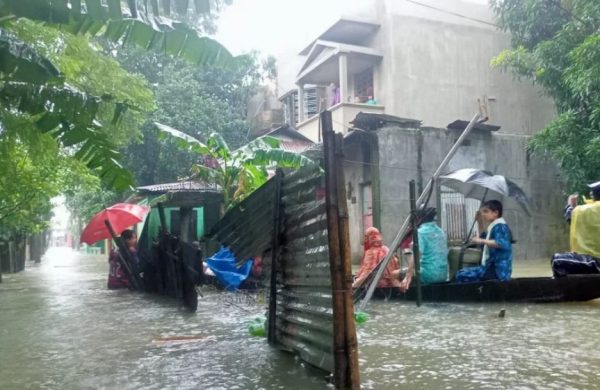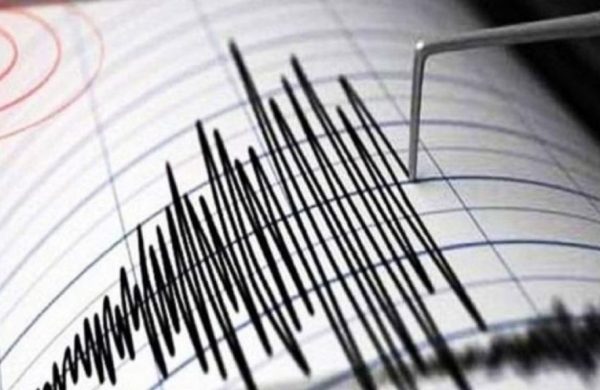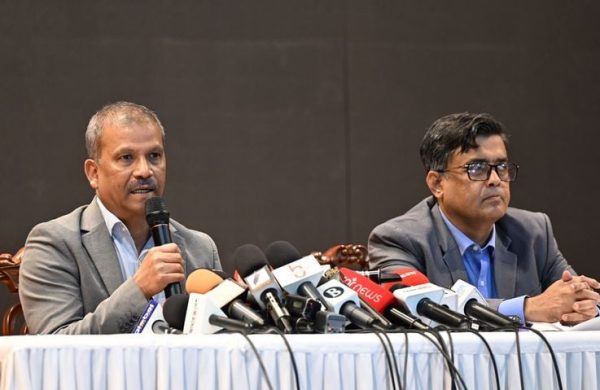Experts advise precautionary measures as flood situation continues to worsening
- Update Time : Thursday, June 20, 2024

- Over 800,000 affected by flooding in Sylhet
- Continuous rain causes severe erosion in Moulvibazar
- Effective communication of flood forecasts is crucial
TDS Desk:
Rising river waters have led weather, flood and climate experts to predict a worsening flood situation in the coming days and urge immediate precautionary measures to safeguard lives and property.
Due to the influence of the monsoon, heavy rainfall is occurring both upstream and within the country. As a result, most areas of Sylhet, Sunamganj, Mymensingh and Lalmonirhat are currently submerged. At the same time, Assam in India is also experiencing floods.
Due to climate change, weather patterns have become unpredictable, and heavy rainfall can cause floods every year. Therefore, experts have advised taking measures in advance to protect people.
Amid these concerns, the Bangladesh Meteorological Department has issued warnings about further heavy rainfall and the risk of landslides. On the other hand, due to active clouds, cautionary signals have been issued for the sea and river ports.
FLOOD DATA
The water levels in the Brahmaputra and Jamuna rivers are rising and may continue to rise over the next 72 hours, potentially reaching danger marks at several points.
Similarly, the water levels in the Ganges and Padma rivers are increasing and may continue to do so for the next 48 hours.
In the northeastern region of the country, except for the Surma River, all major rivers are rising, which may lead to further deterioration of the ongoing flood situation in several low-lying areas of Netrokona, as well as in Sylhet and Sunamganj. However, the current flood situation in the low-lying areas adjacent to the Manu and Khowai rivers in Moulvibazar and Habiganj may remain stable.
In addition, the water levels of the Dudhkumar, Teesta and Dharla rivers in the northern part of the country are likely to rise over the next 24 to 48 hours, causing short-term flooding in several low-lying areas of Kurigram, Lalmonirhat and Rangpur districts.
At the time of the filing of this report, the water levels at 15 points in ten rivers across the country were above the danger level. These include the Dudhkumar, Teesta, Surma, Kushiyara, Manu, Dhalai, Khowai, Old Surma, Sarigowain and Someshwari rivers. Among them, the water level at the Ballah point on the Dhalai River is 131cm above the danger level, while the water at Pateshwari station on the Dudhkumar River is 5cm above the danger level.
Regarding rainfall upstream, the Flood Forecasting and Warning Centre reported the highest rainfall in the last 24 hours was 123mm in Dhubri, Assam, followed by 110mm in Cherrapunji, 109mm in Cooch Behar, 106mm in Kailashahar, 86mm in Jalpaiguri, 72mm in Kalimpong, Goalpara and Siliguri, and 59mm in Agartala.
Sarder Udoy Raihan, executive engineer at the FFWC, said that according to weather forecasts, heavy rain was likely over the next two days, which could cause the river levels to rise further during this period. The situation might take five to seven days to return to normal, he added.
WEATHER FORECAST
In a warning message, the met office said due to active monsoon, heavy (44-68mm in 24 hours) to very heavy (289mm in 24 hours) rainfall might occur in Rangpur, Mymensingh, Chittagong and Sylhet divisions in the 72 hours from 9am on Wednesday. Heavy rainfall may also cause landslides in the hilly areas of the Chittagong and Sylhet divisions, according to its bulletin.
Two areas recorded rainfall above 100mm in the 24 hours till 6am on Thursday: Tetulia 153mm and Sylhet 110mm.
Meteorologist Abul Kalam Mallik said heavy rainfall was expected until Friday morning, and similar heavy rain was likely upstream.
He mentioned that rain would continue throughout the month in Sylhet, Rangpur, Mymensingh and Chittagong, with varying intensities.
Light to moderate rain is expected across the country, with heavy to very heavy rain forecast for parts of Rangpur, Mymensingh, Sylhet and Chittagong divisions.
FLOOD SITUATION
Continuous rainfall and onrush of water from upstream in India have flooded 23 wards of Sylhet city and 106 unions of the district, affecting more than 825,000 people. Among them, around 50,000 people are trapped in Sylhet city alone.
Meanwhile, heavy rainfall in Lalmonirhat has raised the water levels of local rivers, submerging low-lying areas and damaging crops and fish ponds. The Bangladesh Water Development Board’s local office reported that water levels were rising due to rainfall and water from upstream. It said that to reduce water pressure, 44 sluice gates of the Teesta Barrage had been opened.
In Moulvibazar, continuous heavy rain and water from upstream have made the flood embankment of the Dhalai River in the Chaitraghat area of Kamalganj collapse, flooding several villages. Moreover, severe erosion has occurred along a 200-foot stretch of the river.
Water from upstream and rainfall has flooded Sunamganj after Sylhet, marooning hundreds of thousands of people in the district. Floodwaters have submerged the town and surrounding areas, with water entering the ground floors of around 7,000 homes in Sunamganj town.
CLIMATE EXPERT’S PERSPECTIVE
Climate expert Ainun Nishat said that due to climate change, weather patterns had become unpredictable, but normal weather events would still occur.
Typically, there was heavy rainfall during this time of year in regions like Cherrapunji, Meghalaya and Sylhet in June and July, he said.
“This year, the rain seems to have arrived a bit earlier, by seven to ten days, but it does not change the nature of the floods.”
He said heavy rainfall in Arunachal Pradesh and Assam in India was causing severe floods there, adding that the floodwaters would flow down to Gaibandha, Bogra and Tangail in four to five days, and then Manikganj and Munshiganj would be flooded in another four to five days.
“This is a natural process. Our responsibility is twofold—first, to effectively communicate flood forecasts so that people can take measures to protect their lives and property, and second, to take proactive steps to control floodwaters in areas like Sylhet and Sunamganj, where flooding occurs every year.”
“While floods cannot be completely prevented, we can take measures to mitigate their impact and reduce damage,” the climate expert added.













